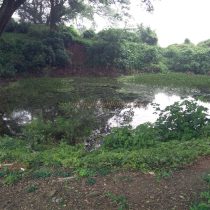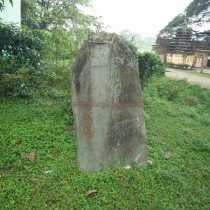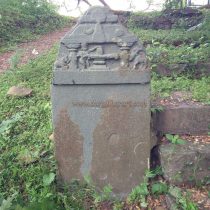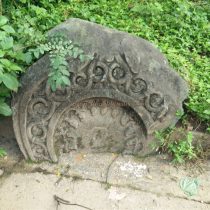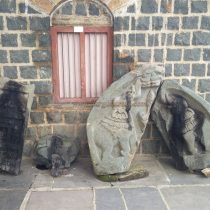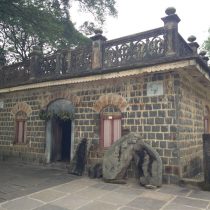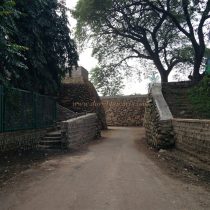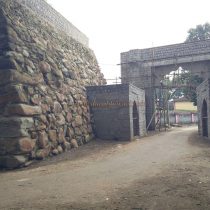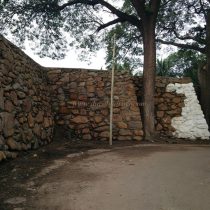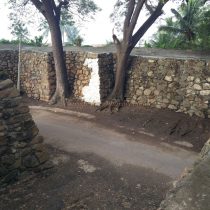HALIYAL
TYPE : GROUND FORT
DISTRICT : BELGAON
HEIGHT : 0
GRADE : EASY
Haliyal, a taluka town in Dharwad district, is not well known in Maharashtra, but Haliyal was a part of the Maratha Empire when the Empire spread to Tungabhadra Kaveri. It is mentioned that Chhatrapati Shivaji Maharaj built or repaired the fort at Haliyal. As Haliyal is a taluka town, it is connected to most of the major cities in Karnataka. The city is 80 km from Belgaon & at a distance of 35 km from Dharwad. Haliyal fort is located on the banks of Someshwar lake in Haliyal city. The perimeter of the fort is spread over about 24 acres and there are few remnants of this circular-shaped fort-like moats, bastions, ramparts, temples. Inside the fort, there is a forest department office as well as a park and it occupies a large part of the fort. Passing through Haliyal village, we enter the fort through the ruined east-facing gate.
...
The gate of the fort has been destroyed today and a new arch has been erected on that place. Around this gate, you can see the rough stone wall of the fort. Considering the height of the ramparts, the door here should have been quite big. There are guard gates on both sides of the door and they have been repaired. The second door inside of the Gomukhi construction has also been destroyed and there are tall bastions on either side of the door. The battlefield is formed in the area between these two gates. The bastion on the left has a closed barn & on the right, another bastion has steps leading to a bastion. Looking straight ahead at the door, there is a forest department park on the right and a forest department office and a rest house on the left. To the right of the road is a garden, with nothing left but a crumbling rampart at its end. If you go to the back of the rest house you will see an old well. Walls around this well are newly constructed. Next to the well are the western ramparts of the fort. The ramparts are very steep and when you climb the ramparts, you can see the moat on the outside of the fort. After seeing the ramparts, if you come back to the road and go straight ahead, you will reach the other end of the fort. There is a mosque on the left and a worn-out inscription on the way to the mosque and there is a pool of water behind this mosque. Someshwar temple is located on the right side of the road and steps have been built to reach the bank near the temple. At the beginning of this step, there are two large inscriptions carved in Kannada language and one of these inscriptions is visible while the other is worn out. The ramparts here are remaining up to some extent and Someshwar Lake is spread far outside the ramparts. The water from this lake is used for the moat. Considering the ramparts and structure of this area, there should be another gate of the fort at this place. The Someshwar temple on the banks of the lake has been renovated and some ancient sculptures of the temple can be seen. Notable among these is the hero stones and Gajalaxmi sculptures. This is where your hour-long fort round ends. Although not much history of the fort is known, it is mentioned that Haliyal fort was built or renovated when Shivaji Maharaj annexed the Dharwad part to Swarajya in 1680 AD. Later, the fort came under the control of the Mughals and later to the Karveerkars. Seeing that Babuji Nayak and Fatehsingh Bhosale did not have much influence on this area, in 1747, Sadashivrao Bhau invaded this area with Sakharam Bapu and Mahadjipant Purandare. He went to Tungabhadra and conquered 22 parishes like Kittur, Gokak, Parasgad, Badami, Bagalkot, Torgal, Haliyal, Nargund, Yadav, and Basavapattan. He threatened Nawab Savnurkar and Desai of this area. Later, however, there is not any mention of this fort.
© Suresh Nimbalkar

